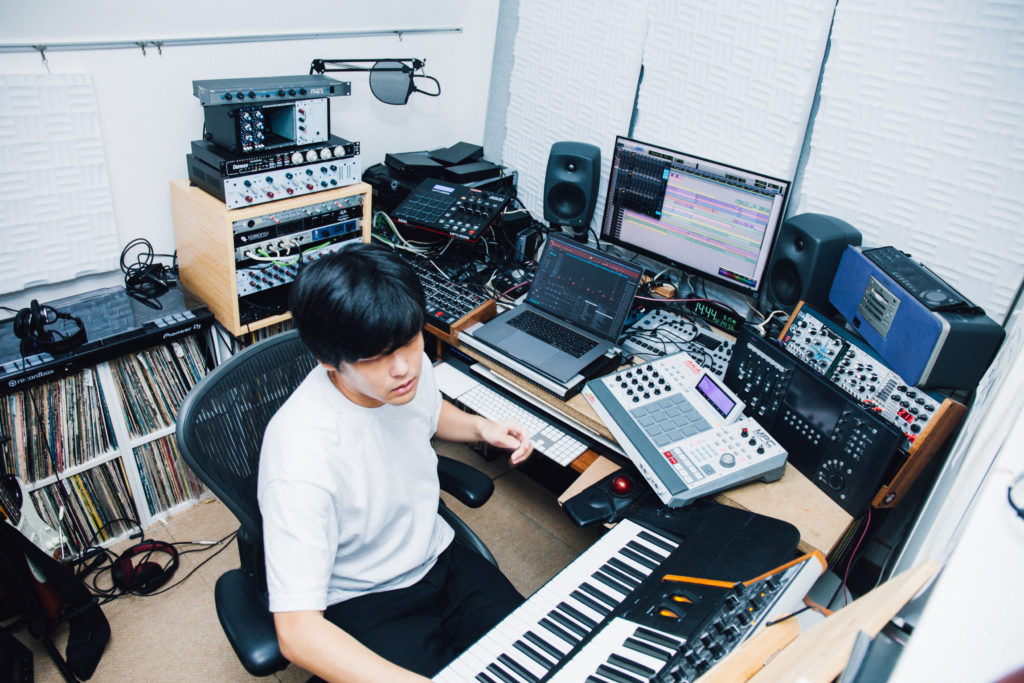
STUTS’ home-cum-studio, Atik Studio, nests somewhere in Tokyo. Producer and MPC drum machine player STUTS creates, eats, and sleeps at this studio/living space, which is full of musical equipment and records. There is a human warmth here, reminiscent of his personality and music. There is serenity, too. His mini-album Contrast, released in September of this year, was born in this very room. On top of using an MPC and keyboard, as usual, he sang and used a guitar and bass for the first time. It could be said that he made the album with a newfound curiosity. Contrast is truly an intimate, personal masterpiece. People versus the world, people versus people, the intangible versus tangible; STUTS looks at the boundaries between these entities and tries to break free. Come and look into his sonic trajectory today.
——Thank you for welcoming me to your home. How long have you lived here?
STUTS: I have lived here for two-and-a-half years. The size is perfect, and I like how it’s quiet around here. I can also go to the city by bike, so it’s my favorite place so far.
—You often work from home, yes? In an interview, you said, “maybe I should create a program that turns the light switch or AC on and off.” Do you change your means of making music often?
STUTS: Yes, I said that, but I haven’t been able to manifest it (laughs). Regarding your question, I accumulate stuff here and there, but nothing has changed too much. When I was in 10th grade, I used to make tracks with an MPC drum machine by plugging it into a MiniDisc stereo system. I feel like how I make music hasn’t changed since then. I bought that turntable on that shelf in 11th grade.
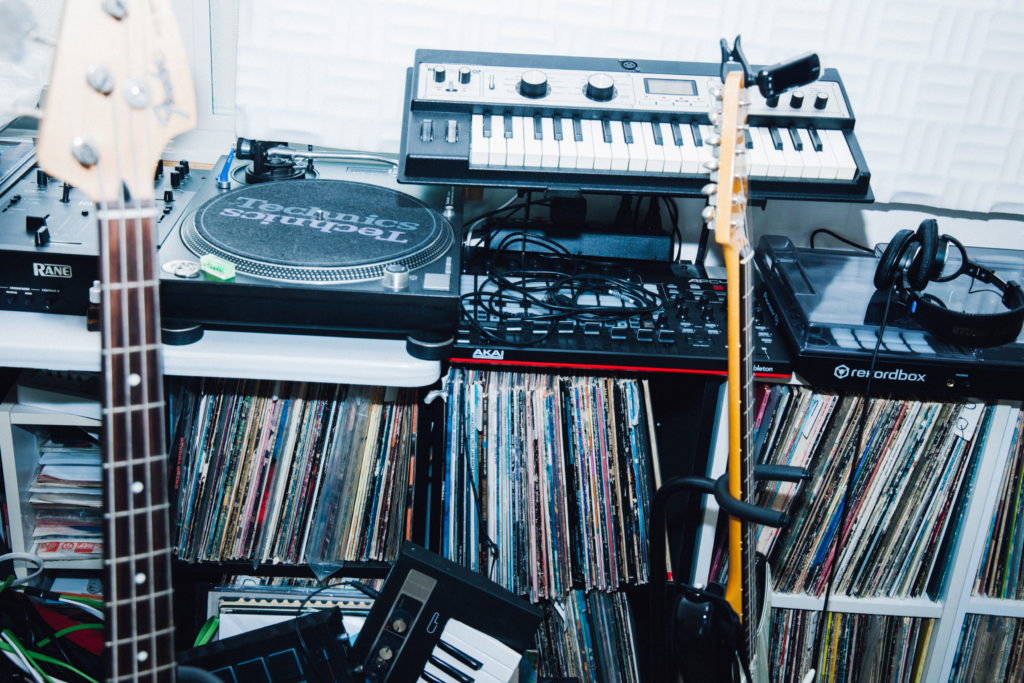
——Wow, you’ve been using it for quite the time!
STUTS: The first turntable I bought was cheap, so I couldn’t do much scratching. It’s at my parents’ house. But I’ve been using this one forever. I don’t use my first-ever MPC, but I’m sure it’s lying around somewhere (laughs).
——I mean, you have heaps of equipment here (laughs). Are your everyday life and music tied together?
STUTS: I’m not sure. I experiment with my MPC or other instruments to get an image of a track in my head. It allows me to reflect on my life at that moment in time. It also brings back these feelings I’ve had in the past. I don’t do it consciously, like “I’m going to pour my heart into this!” It just happens naturally. Also, I see sounds as colors and images too. Like, “this sound is the equivalent to this scenery and color.”
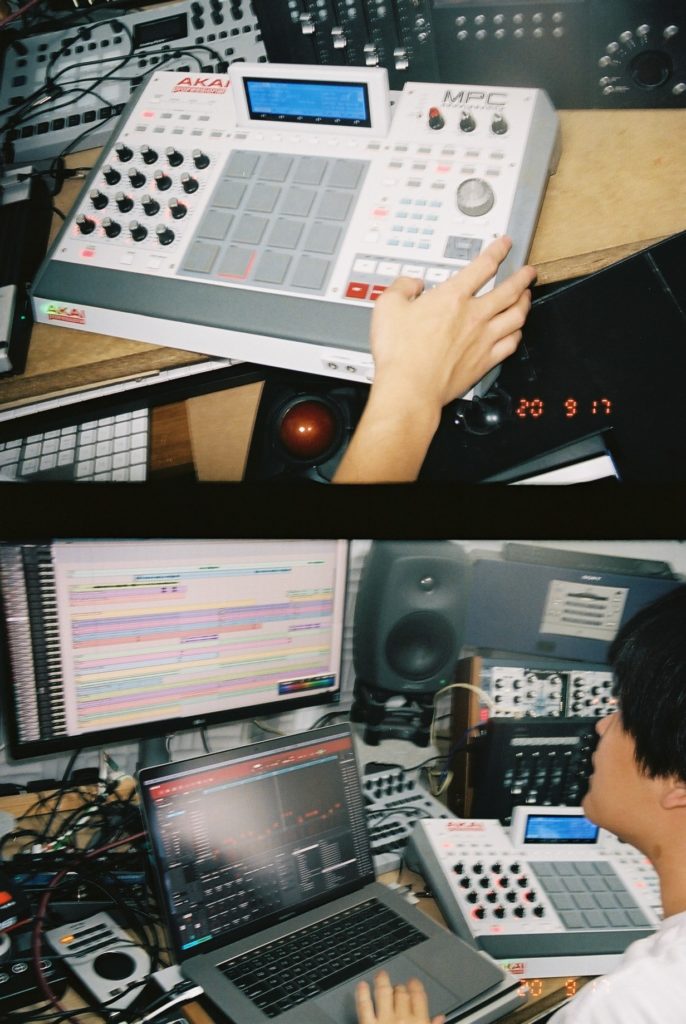
——Right, it’s something similar to synesthesia. Have you always seen sounds in your head?
STUTS: Probably! I just got a memory in my head; I remember listening to music in the backseat of my parents’ car -this was before I got into hip hop- and I feel like I saw these hazy colors and shapes back then too.
——How interesting. Do you think music has influenced you the most?
STUTS: I think so, more or less. When I got into music, I listened to hip hop like a maniac. At first, I liked Rip Slyme, Kick the Can Crew, and Eminem. I got into more underground stuff after that. Before I became interested in beats, hip hop drew me in because I thought rapping was cool.
——I was born in 1989, which is the same year as you. Don’t you think rap music in the 2000s had this element that spoke to your raging, teenage spirit? I was really into Eminem too. After I argued with my parents, I would walk around the city at night time with Eminem playing in my ears (laughs).
STUTS: Ha! I remember discovering Snoop Dogg through one of Eminem’s albums, and I thought he was cool. That made me interested in west coast hip hop. I even bought compilation albums. I mean, it’s not the same as escapism, but I would immerse myself in the world of hip hop whenever something bad happened to me. Adolescence is a delicate thing.
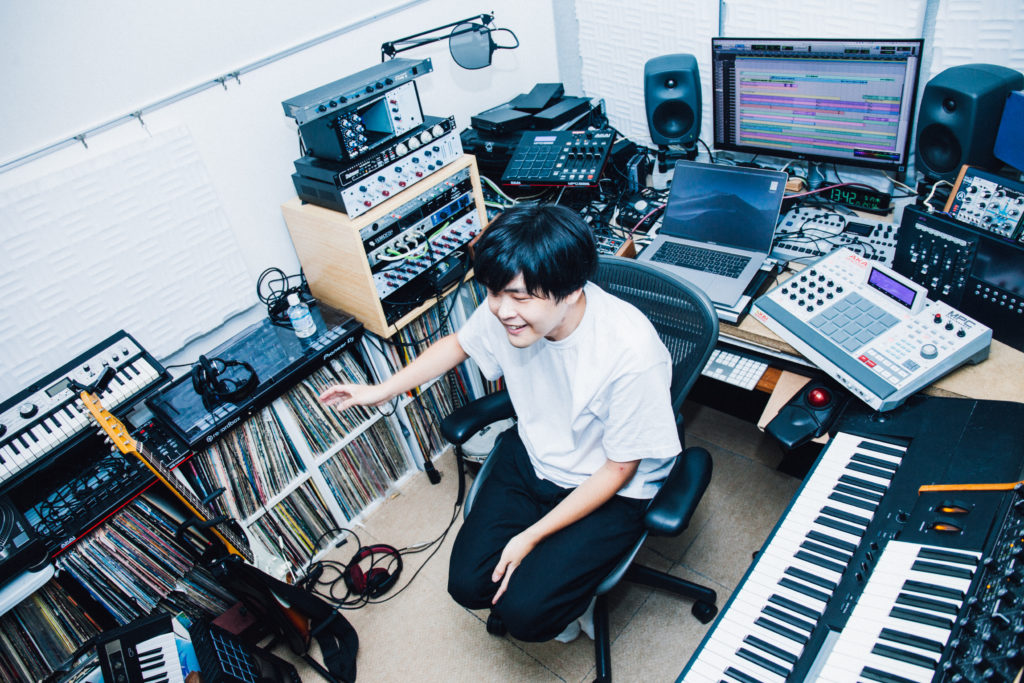
——Hip hop is dominating the charts today, but essentially, I think it’s a genre of music that goes against the status quo. Did you relate to the voices of “outsiders” in hip hop?
STUTS: I didn’t think of myself as an outsider, but in hindsight, I felt different from everybody else because of my stutter. It’s not a disability, but sometimes people couldn’t understand what I wanted to say fully. I would think, “no, that’s not what I mean” but I couldn’t communicate it. Now that I think about it, music was my refuge, and it also let me purge my frustrations.
——Have you always wanted to work with music?
STUTS: It was one of those dreams I thought wouldn’t come true. I thought I would do music while having a day job. I was looking at my yearbook from middle school the other day, and there was this section like, “This is where I see myself in a few years.” I had written two scenarios (laughs). I wanted to get into medicine, so I wrote, “I guess I’ll become a doctor after getting into medical school in three years” (laughs). The other one was, “I will pursue music after failing to get into medical school.”
——So, you thought about what you would do, were you to fail medical school (laughs).
STUTS: I think I was only half-joking because the other half of me wanted to do music. What I wrote was so detailed, like “I’ll release a few records and produce beats for rappers after that” (laughs). I think there was a part of me that wanted to embark on a path that wasn’t predetermined.
A more personal album
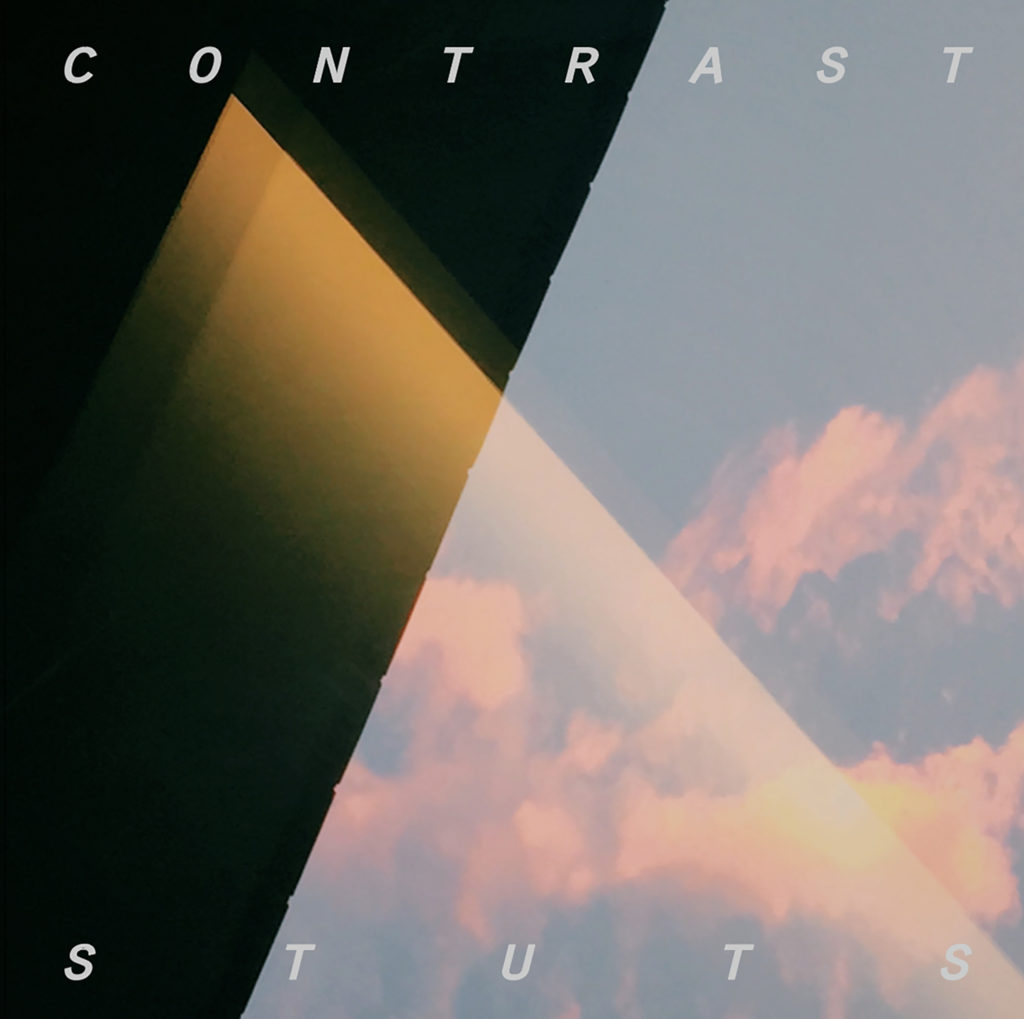
——I’m sure we’re going to touch on, say, duality, because of the album title, Contrast. What’s the meaning behind it?
STUTS: I don’t want to push my interpretation of the title onto the listener, but I initially wanted to make something that dealt with boundaries. We all have many versions of ourselves, and I was wondering what boundaries separated one version from the other. Also, we all live on the same planet, but we have different values and outlooks. I started thinking about this a lot after releasing my second album, Eutopia.
——I see. You featured a lot of artists on Eutopia, such as Ryosuke Nagaoka and Phum Viphurit. Your latest album has some features, but I feel as though you built a cohesive sonic universe of your very own.
STUTS: Yeah, this album is more personal than the previous one. I think that’s where the cohesive aspect comes from. At the beginning of this process, I was figuring out what format would best showcase these songs I made by experimenting with my vocals. I played with the idea to make an EP with about two tunes featuring my singing, two instrumental tracks, and one song with another featuring artist. And before I knew it, it grew into a mini album.
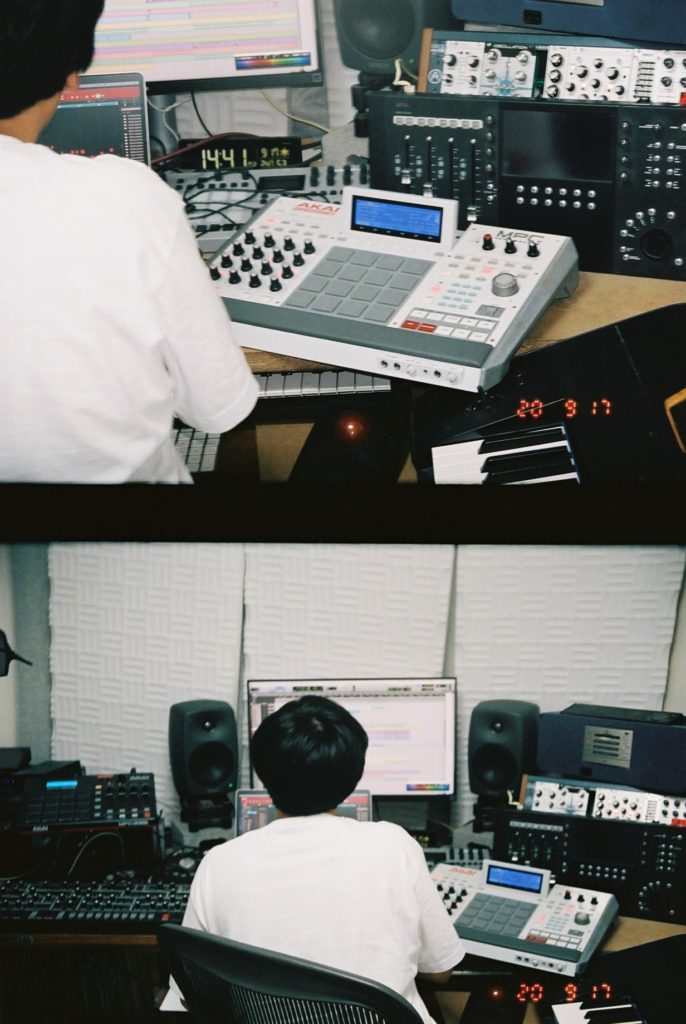
——You sing so beautifully. Your song next to another one with a featuring artist flows seamlessly, you know? It doesn’t sound like this was your first go at singing on top of a track. I thought the way you use your voice on the sixth tune, “Vapor,”was incredible, especially the bit where you rap in a low voice and sing the hook. The way you express your voice in the rap part and the hook is very different.
STUTS: Really? I’m so happy to hear that. I kind of made “Vapor” by accident. When I was experimenting with this new drum kit that I had bought, I came up with a beat and melody. I recorded myself humming the melody on my iPhone and made a demo from there. I felt the pressure because people were talking about how I was singing on this new album even before I had released it. But I’m glad you felt that way after listening to my singing.
Being encouraged to sing by a friend
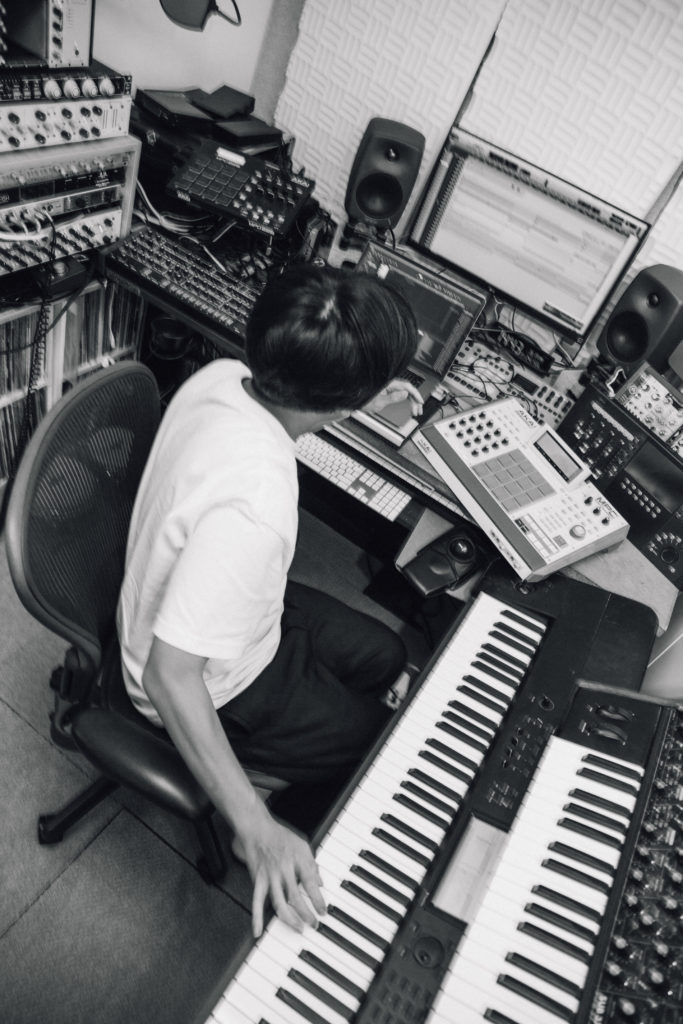
——I feel as though you constantly challenge yourself with each album, but why did you think of trying your hand at singing?
STUTS: I started doing music because I wanted to rap. I’ve always had the desire to create a vocal track all by myself. And I’ve tried doing it before. But I didn’t have a proper process, and I just wasn’t satisfied with the results. However, I’ve had sessions with vocalists and rappers, and thanks to my experiences with them, I learned how to make songs properly. I put my experiences into practice this past year.
——Is it true that you felt encouraged to sing after your friend, and a person working in A&R, heard your vocals?
STUTS: It’s true. I showed a demo track to a friend, and they were like, “nice!” That was the push I needed. But I can’t listen to my voice objectively. This doesn’t apply to my other tracks, though. My voice is too close to myself that I can’t make up my mind about it. This album doesn’t feel like something I released as a producer.
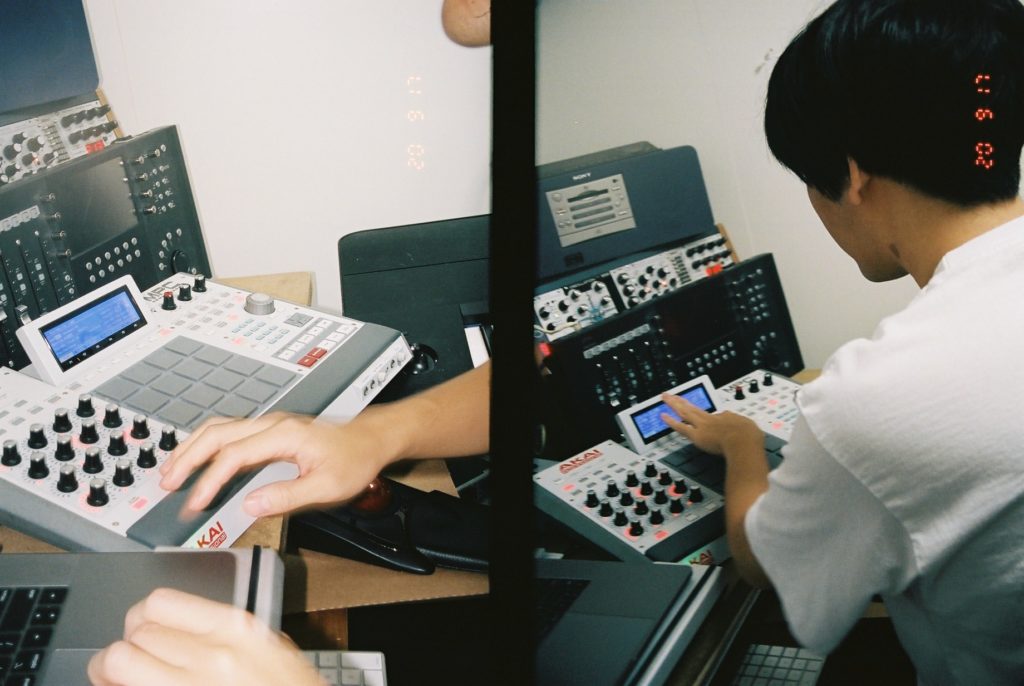
——I see. Perhaps it’s closer to releasing something as a singer-songwriter?
STUTS: Maybe. I’m confident about the tracks I make, so when I released my first album, I was like “everyone, check it out!” But I think there was more pressure this time around, because I took on a new challenge as a producer and MPC player that has already released music before this album. I had to live up to the expectation.
——I think it’s amazing. You played the guitar and bass on the third song, “See the Light,” and seventh song, “Landscapes.” Why did you play new instruments for this album?
STUTS: I’m not at a proficient level yet, but I’ve been practicing for a while now. And that led to the creation of those songs. The seventh song came about when I was practicing chord progressions. Instead of being like, “I’m going to make a song,” it came together naturally through trying a lot of things out. I started thinking about how it would be fun to play instruments around three years ago. There’s a video that shows how the producer made Childish Gambino’s “Redbone.”
———That video sounds so cool!
STUTS: Here it is (plays the video on his computer). His name is Ludwig Goransson, and he made the song by himself. It was inspiring to see how someone could make that sampled texture, which is a sound I like, by playing instruments on their own. I thought it would be fun if I could do something like that too, and that’s why I started practicing. I realized that the recorded sound of the instruments I played for the album wasn’t good. It was difficult to fix and edit the sounds in a way that sounded nice.
——Right. I assumed you picked up new instruments because you felt constricted and wanted to look for something new. It seems like that isn’t the case.
STUTS: It wasn’t like that. The only reason I used to ask other musicians to play instruments was that I couldn’t. I’ve always wanted to play instruments and try singing. However, I also know that doing everything on your own doesn’t automatically make it good. So, regarding my latest album, I was just like “I’m going to try it.”
Creating from various approaches

——The band members from “STUTS One Man Show ‘90 Degrees’” are featured on your latest record too: Yusei Takahashi (piano, synths), Akihiko Ohgi (guitar), Keigo Iwami (contrabass), and Sota Kira (drums). Also, Satoru Takeshima, who also plays with Gen Hoshino, plays the sax and flute on Contrast. However, I heard that you took a different approach from your previous album. Could you expand on that?
STUTS: On the previous album, I sampled the recordings of them playing their instruments and built the tracks like that. This time was different. I was having a jam session with Yusei (Takahashi) on the piano at home, and I recorded some phrases I liked. I then edited it via a MIDI. I asked Akihiko (Ohgi) to play some chords on the guitar; the track only had piano and drums at that point. Last, I asked Satoru (Takeshima) to play his instruments. Instead of having a session with the whole band, I recorded one instrument at a time. That’s how the first song, “Conflicted” was made. The way I recorded the sounds is different in this song, compared to the others.
——The fourth song, “Contrast, Pt. 1” and the fifth song “Contrast, Pt. 2” are reworks of your live performance in January, yes?
STUTS: Yes. I originally had a beat made, and the others played their instruments on top of that beat during the live performance. I sampled those performances and made those two songs. It felt like I made music as a band on the previous album, but with this album, I had everyone play a little something on top of my beats. The first songs feel like Yusei and I had made it together, but regarding the other songs, I was in control when I produced them.
——Korean singer-songwriter SUMIN, rapper, and artist Daichi Yamamoto, and rapper Chinza Dopeness are on the second track, “Mirror,” but how did this collaboration come about?
STUTS: I made “Mirrors” the same way I used to make music before this album. I wanted to include a song reminiscent of my previous sound. When I first finished making the beat, I wanted Daichi to hop on the track. And after that, I felt like it would be cool to have another person, so I got Chinza-san to rap too. It was a proper rap tune at that point. Once all the verses were complete, I wanted a woman vocalist to sing the hook. I heard SUMIN’s music when I went to Korea to play a show, and I instantly got into it. I approached her because I thought her voice would suit the song.
Challenging oneself to become limitless
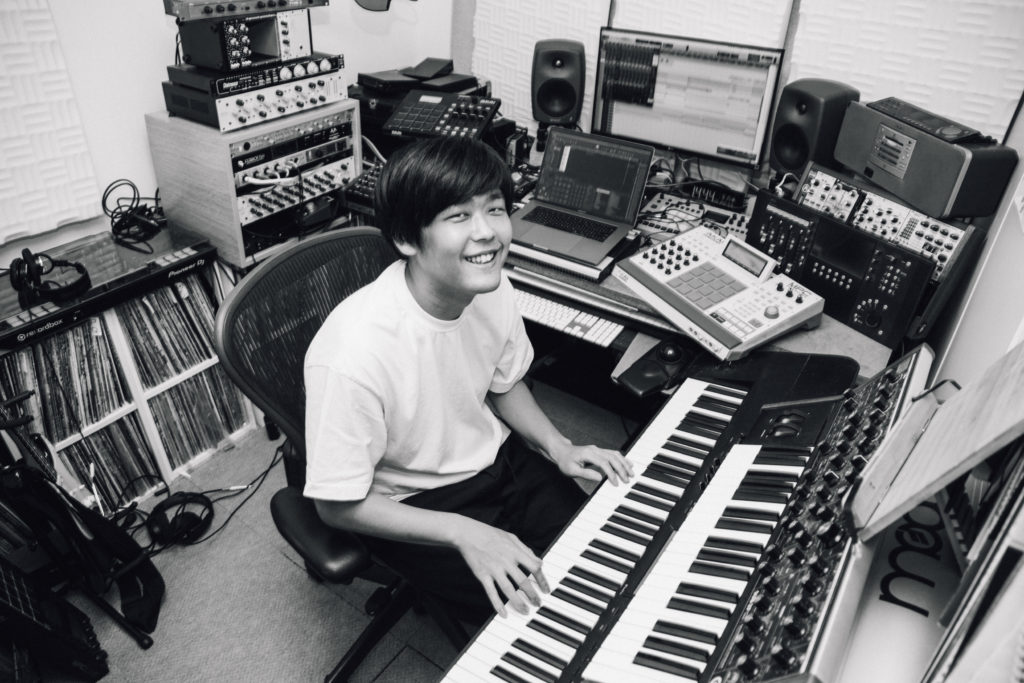
——The album is brilliant, and there are so many songs I’m excited to listen to in a live setting. You’re planning on going on an album release tour in Tokyo, Nagoya, and Osaka this October, yes? You’re going to have a live audience for the first time after the pandemic broke out.
STUTS: Yes. We haven’t rehearsed yet, but I’m planning on playing with Akihiko Ohgi (guitar), Keigo Iwami (bass), Sota Kira (drums), and Taihei (keyboard). I don’t think the band’s going to play on every single track, though. It would be nice if I could play on my own for some time and then deliver a good band performance too.
——Will we see you sing and play instruments live?
STUTS: Hmm, I’m not so sure (laughs). I am still figuring it out. There are some positives to streaming or playing online, but I reckon it feels very different to get up on stage and play live. I hope I can give a great performance.
——You continue to try doing new things, which broadens your musical horizons. Do you have any goals?
STUTS: I want to be boundless. However, I know that there will always be things I can’t do, and that is fine. Instead of sampling sounds I like, I want to make such sounds from scratch. When it comes to creating the music I envision in my head, I’m like, “I wish I could create this or that, but I still can’t.” So, I want to learn to do the things I can’t do, little by little.
——I like what you said there; “I want to be boundless.”
STUTS: I want to continue creating tracks and playing my MPC drum machine while studying different methods at my pace. I desire to expand my world.
STUTS
STUTS is a producer and MPC player born in 1989. In 2013, a video of him playing an MPC drum machine on the streets of Harlem, New York, became viral. He released his first album, Pushin’ in April 2016. His track, “Yoru Wo Tsukai Hatashite” featuring rapper, PUNPEE is known as a club anthem that symbolizes Tokyo at night time in the 2010s. In June 2017, STUTS released “ABS+STUTS” with fellow musician, Alfred Beach Sandal. He was featured in “The Shower,” which accompanied Gen Hoshino’s single “Doraemon” in 2018. In September of the same year, he released his second album, Eutopia, which featured artists from in and out of Japan. STUTS released a mini-album, Contrast this September. Aside from creating his music and playing live, he produces for many others. He also collaborates with musicians and creates music for commercials.
http://stutsbeats.com
<LIVE INFOMATION>
■STUTS “Contrast” Release Live @Nagoya JAMMIN’
Date: 10/17/2020
Place: Nagoya JAMMIN’
Time: First set- doors open 4:15pm/starting time 5pm, Second set- doors open 7:45pm/starting time 8:30pm
Price: Advanced tickets- 3,900 yen (tax included/no seats/drink fee separate)
■STUTS “Contrast” Release Live @Osaka LIVEHOUSE ANIMA
Date: 10/18/2020
Place: Osaka LIVEHOUSE ANIMA
Time: First set- doors open 4pm/starting time 4:30pm, Second set- doors open 7:30pm/starting time 8pm
Price: Advanced tickets- 3,900 yen (tax included/no seats/drink fee separate)
■STUTS “Contrast” Release Live @Tokyo LIQUIDROOM
Date: 10/26/2020
Place: Tokyo LIQUIDROOM
Time: Doors open 6:30pm/starting time 7:30pm
Price: Advanced tickets- 4,200 yen (tax included/no seats/drink fee separate)
■Livestream: STUTS “Contrast” Release Live @LIVEWIRE
Date: 10/26/2020
Time: starting time 7:30pm
Price: Advanced tickets- 2,500 yen
Photography Ko–ta Shouji
Translation Lena Grace Suda
